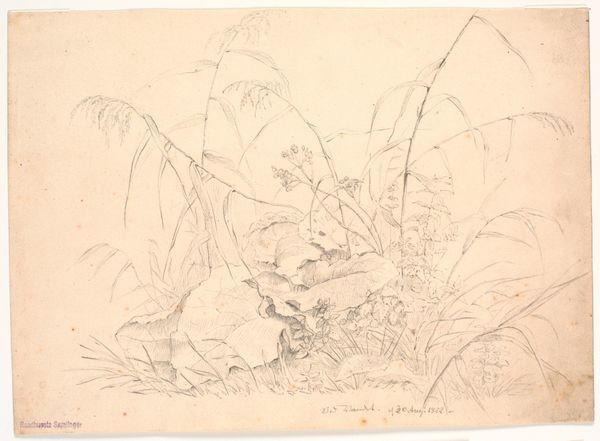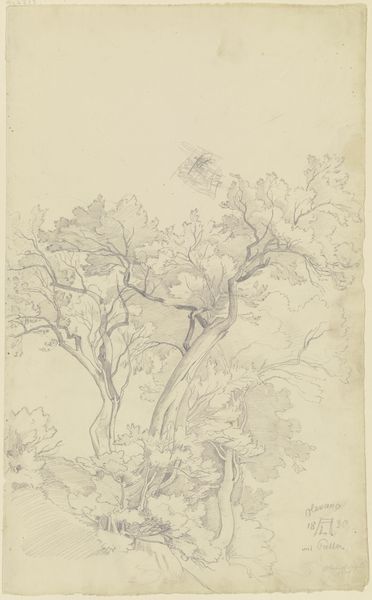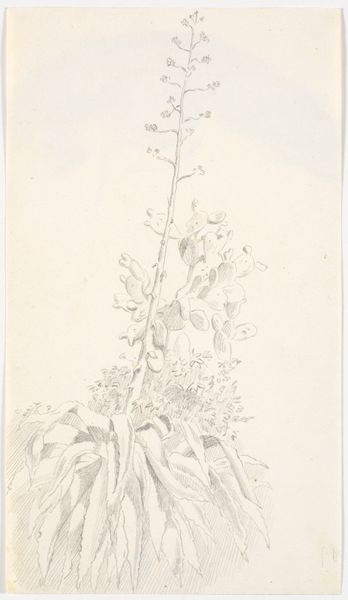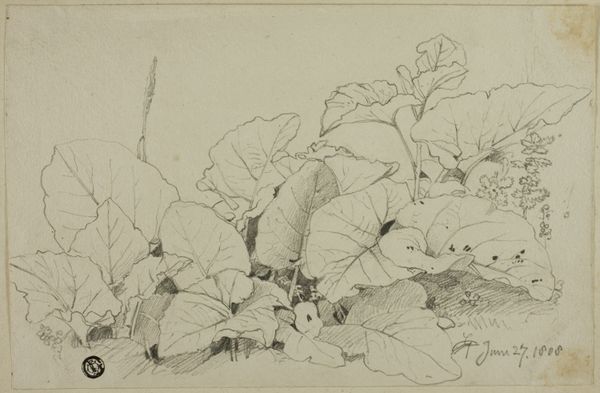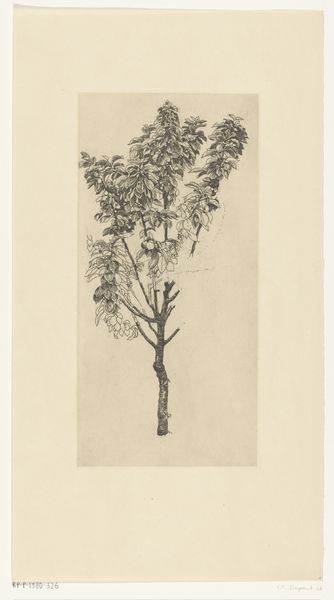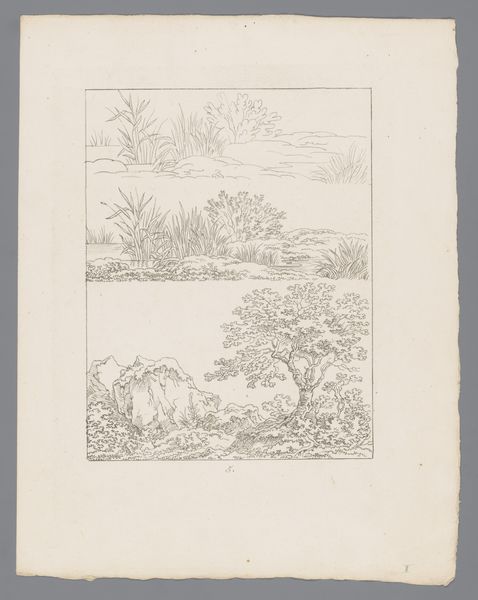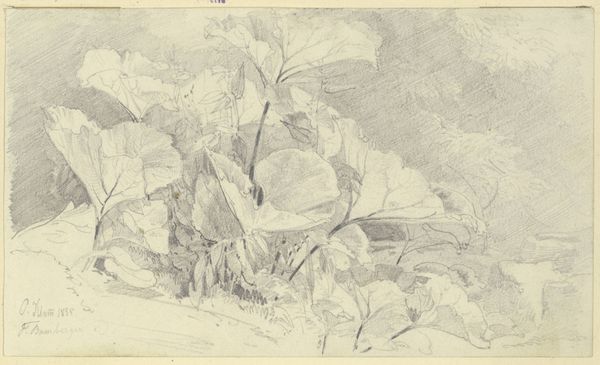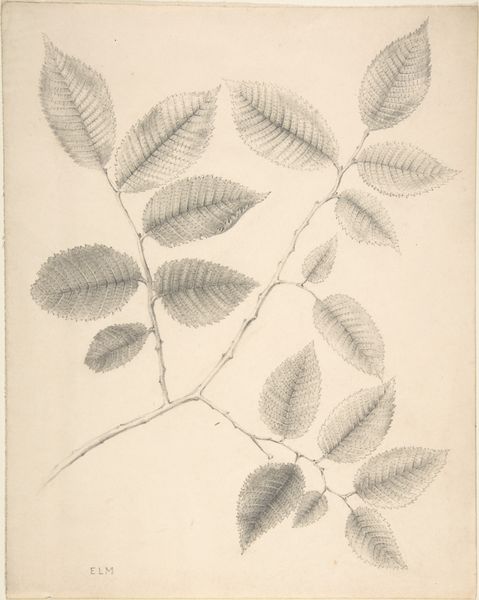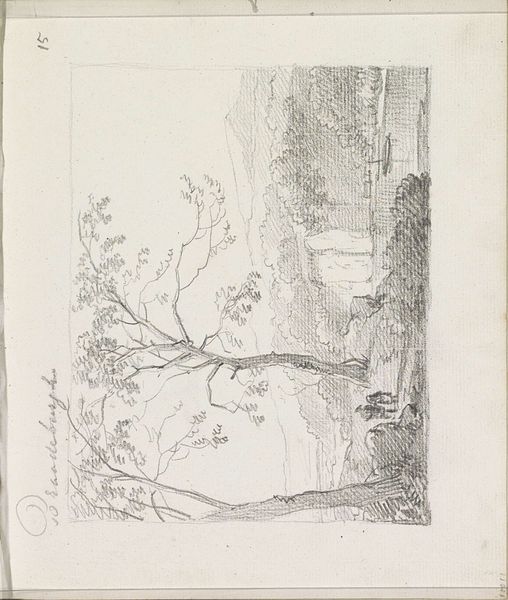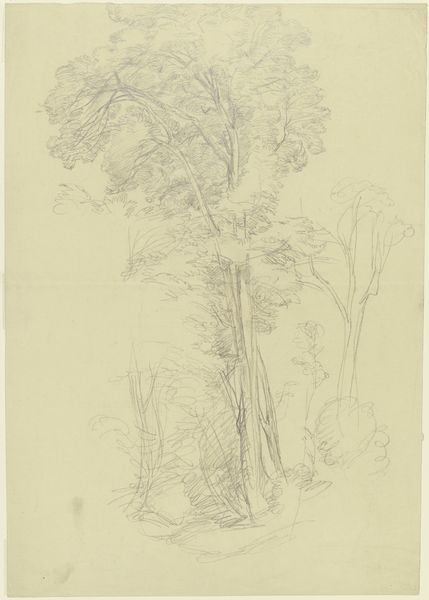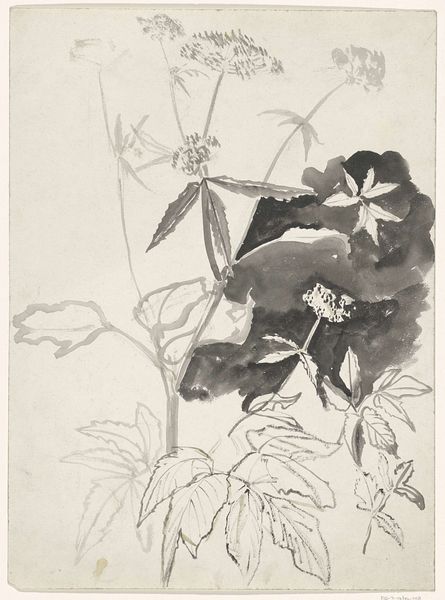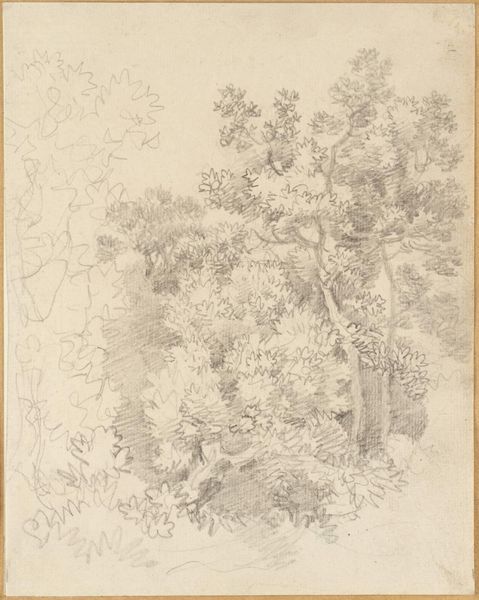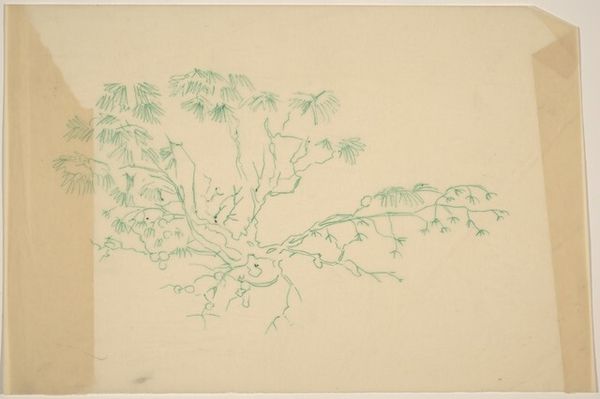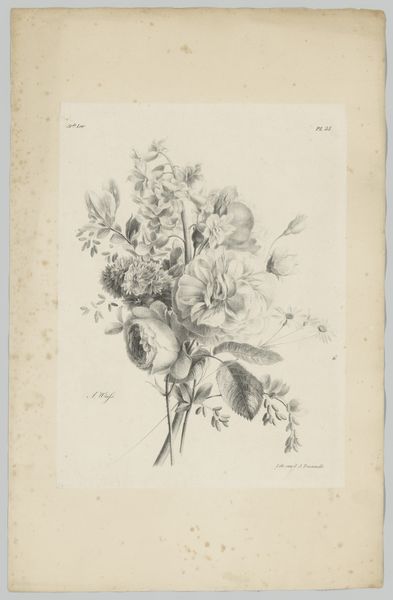
Study of a Willowherb; verso: Study of Two Cows 1858
0:00
0:00
drawing, print, ink, pencil
#
drawing
# print
#
pen sketch
#
pencil sketch
#
landscape
#
ink
#
pencil
#
realism
Dimensions: Sheet: 7 1/16 x 5 3/8 in. (18 x 13.7 cm)
Copyright: Public Domain
Editor: This is Carl Gustav Carus’s "Study of a Willowherb; verso: Study of Two Cows," created around 1858. It’s a drawing done in ink and pencil. I’m struck by the detail in the willowherb – you can really see the individual leaves and buds. What’s your take on this piece? Curator: I'm drawn to the evident process. Carus wasn't just representing nature; he was actively engaging with its materiality. Look at the pencil work—it isn’t simply outlining the plant. How does the artist utilize these raw materials to create a textured surface? Consider also the social context. Botanical studies such as these contributed directly to the rise of agriculture, botany, and natural sciences at the time, fueling social systems that both depended upon and commodified our perception of the natural world. Editor: That's fascinating! So you're saying that the medium and the social applications of scientific drawings inform the purpose of art making here. I was just looking at the willowherb and thinking how delicate it seems, and it seems I missed that context. How can something delicate imply societal context like this? Curator: Precisely! What does "delicate" imply when rendered with specific tools – pencil, ink – for a culture invested in systematizing natural knowledge? Think about it: materials enable scientific study and resource exploitation. What labor does this imply in 1858? Editor: The hand of the artist…and maybe that of scientific application of the image later. I hadn't really considered it that way. This helps me see beyond just the aesthetic beauty. I will remember the social framework! Curator: And I'm reminded to keep asking how materials transform the way we observe and classify the natural world around us.
Comments
No comments
Be the first to comment and join the conversation on the ultimate creative platform.
